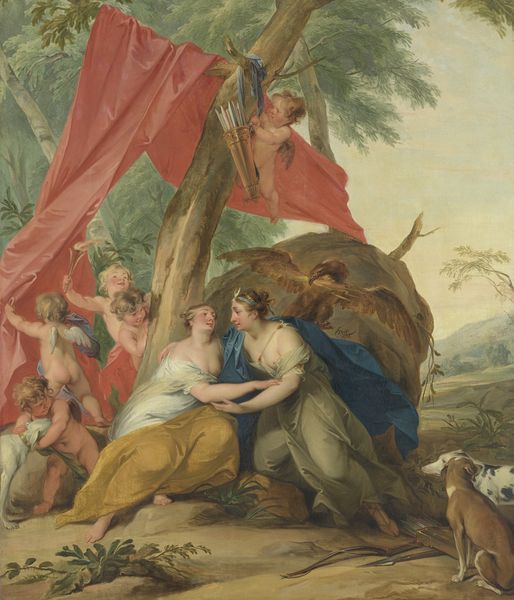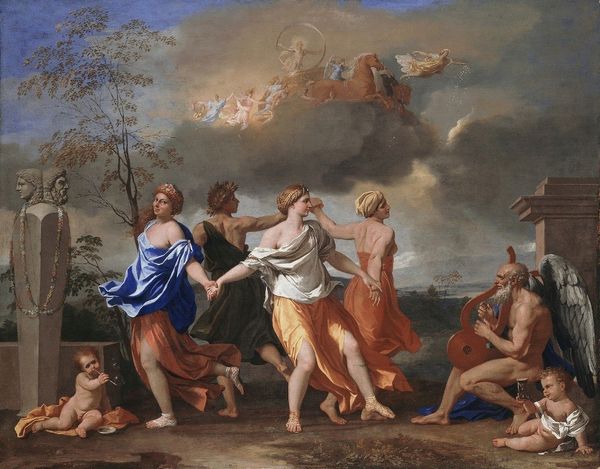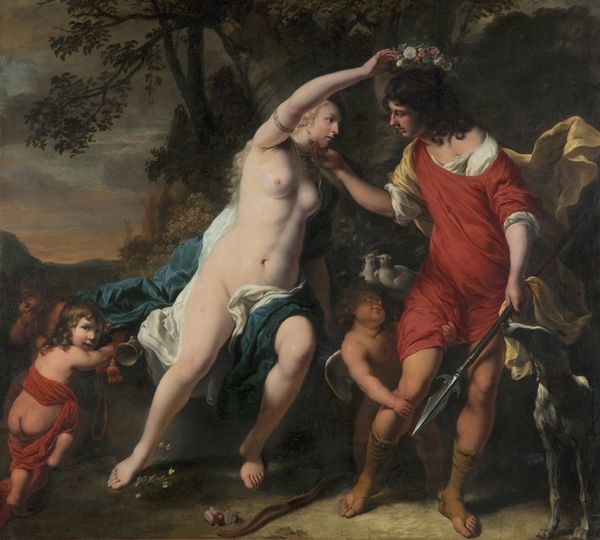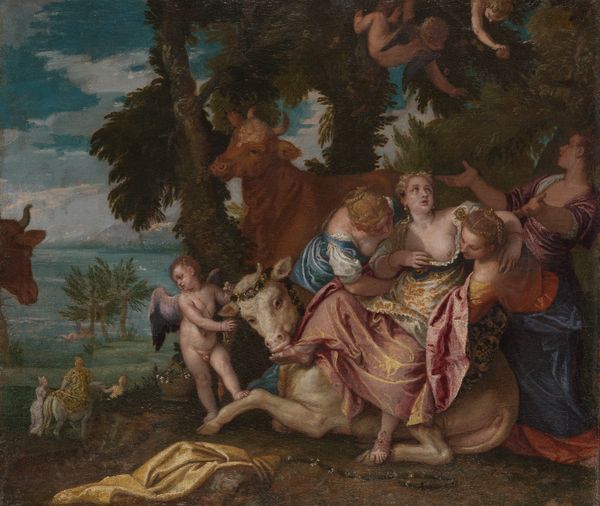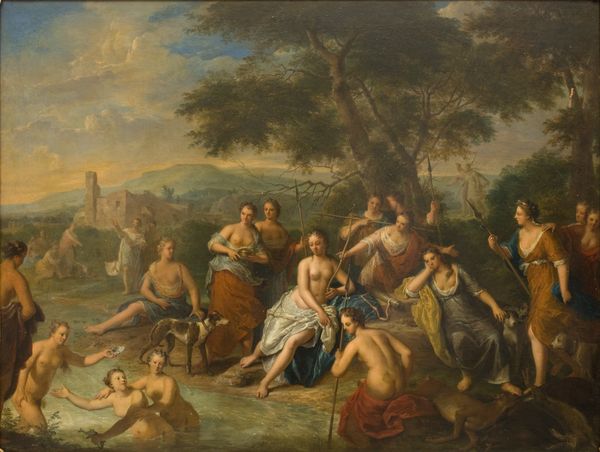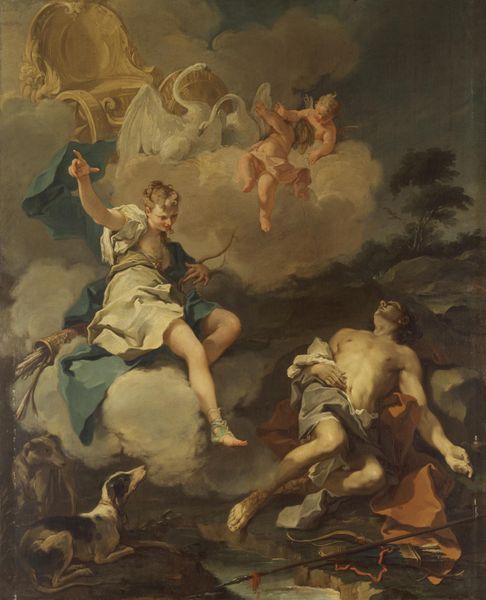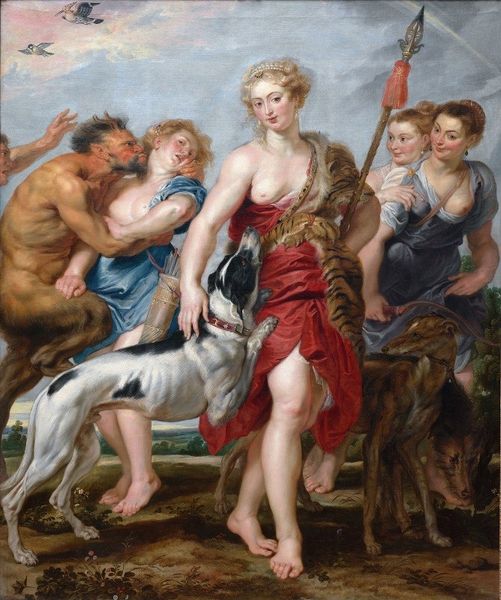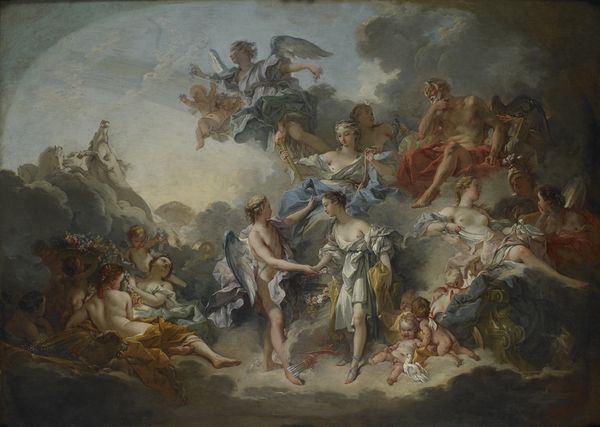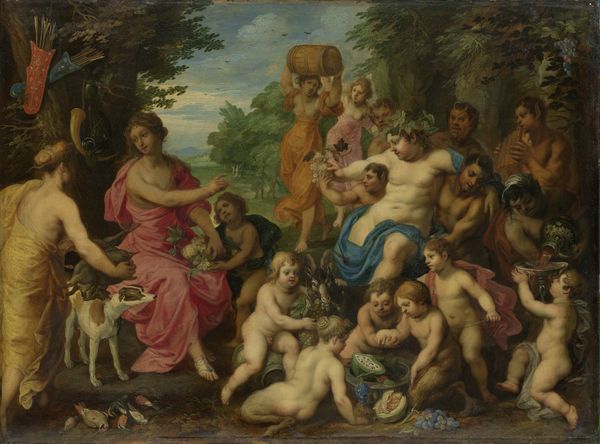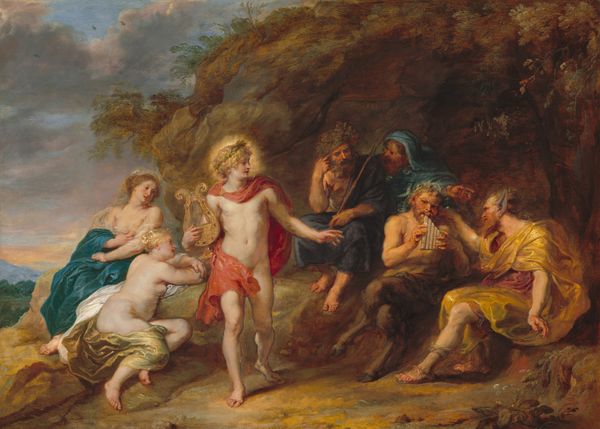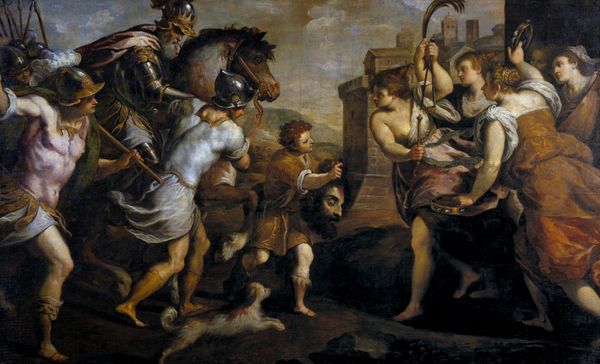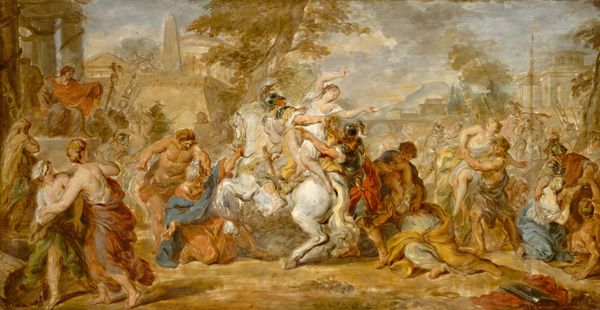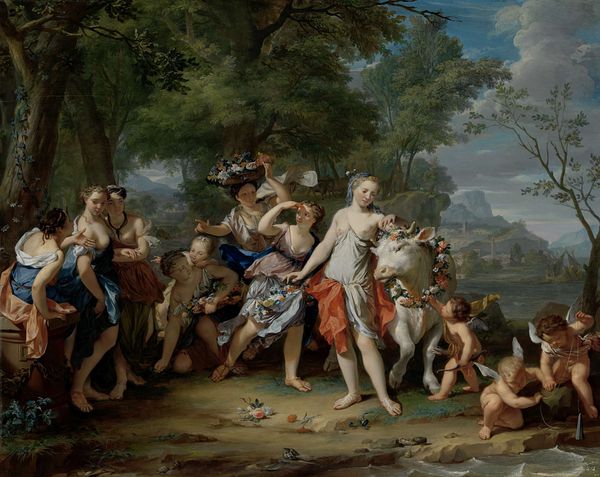
painting, oil-paint
#
allegory
#
baroque
#
painting
#
oil-paint
#
landscape
#
figuration
#
oil painting
#
history-painting
Copyright: Public domain
Diana Cazadora, painted by Peter Paul Rubens, presents the Roman goddess Diana on the hunt. Painted in the early 17th century, probably in Antwerp, this work presents an idealized vision of aristocratic leisure. Rubens, a prominent figure in the Flemish Baroque tradition, frequently drew upon classical mythology, aligning his patrons with the grandeur of the ancient world. Diana, goddess of the hunt, embodies both power and independence, qualities desirable for the noble families who commissioned such works. The lush, dynamic composition, filled with robust figures and energetic dogs, showcases Rubens' mastery of color and movement. Yet, beyond the aesthetic appeal, it's crucial to recognize the painting's social function. It subtly reinforces the status and cultural capital of its commissioners. Understanding this artwork requires delving into the patronage systems, artistic conventions, and social hierarchies of the period. Through these lenses, art becomes a window into the past, reflecting the values and power structures of its time.
Comments
No comments
Be the first to comment and join the conversation on the ultimate creative platform.
